Perhaps more appropriate for opening this week than was ever thought when planning film release schedules is Denis Villeneuve’s ARRIVAL. Written by Eric Heisserer based on the award-winning sci-fi novella “Story of Your Life” by Ted Chiang, ARRIVAL is conceptually fascinating with its thematic exploration of time, and more importantly, commentary on humanity and mankind in general. Cerebral and intelligent, ARRIVAL leads one to a fascination with the art of communication and the “what if” of possibility and the unknown. A thinking movie, ARRIVAL has the beautiful look and feel of a Terrence Malick and Brit Marling meld of science fiction and the collective consciousness that you osmotically absorb with every fiber of your being and never shake.
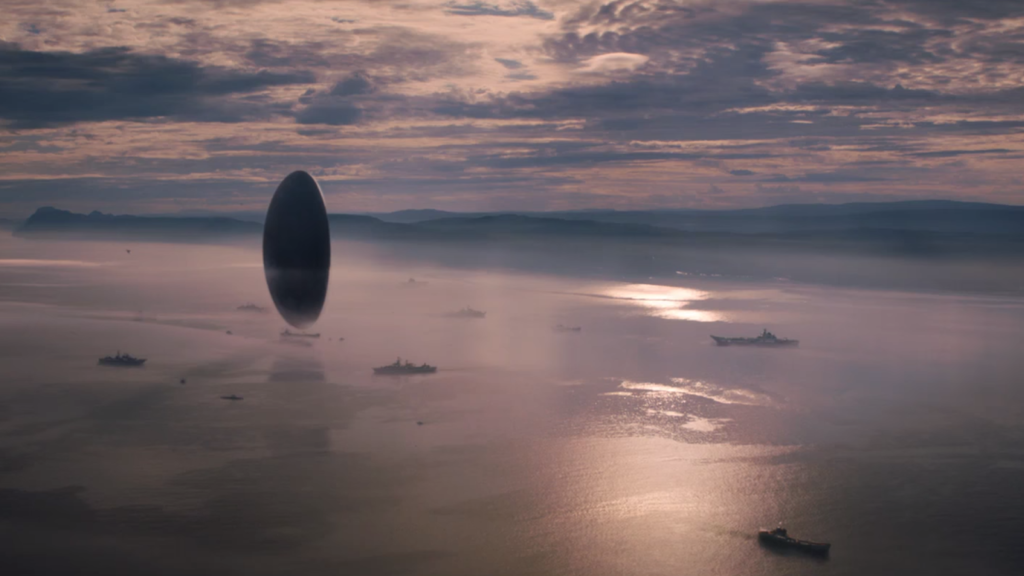
Louise Banks is a linguistics professor, marginalized not only because she’s a woman but because she’s an academic. She’s also drowning in a malaise and despondency following the death of her young daughter Anna. But life as Louis knows it is about to change when 12 vertical football shaped alien pods arrive on earth positioning around the globe. No one knows who they are, why they are here or what they want despite efforts my various militaries to communicate with the pods. (Needless to say, the military attempts at communication bear results almost as bad as those seen in “Independence Day”.) While the world around her is going haywire, Louise keeps plodding along in her zombie-like routine, even appearing unimpressed when the Army’s Colonel Weber walks into her office asking her “how” to communicate with the aliens based on a poor recording of some sounds. Very matter-of-factly, Louise states she needs to be taken to an alien pod to see it, “meet it”, in order to try to figure out their language. Weber initially dismisses the idea, only to return to Louise after meeting with another much less qualified linguist who we learn thanks to just one word might have put earth in an interstellar war. Covering all of its bases, the military also enlists the help of physicist Ian Donnelly to approach communication from a mathematical standpoint.
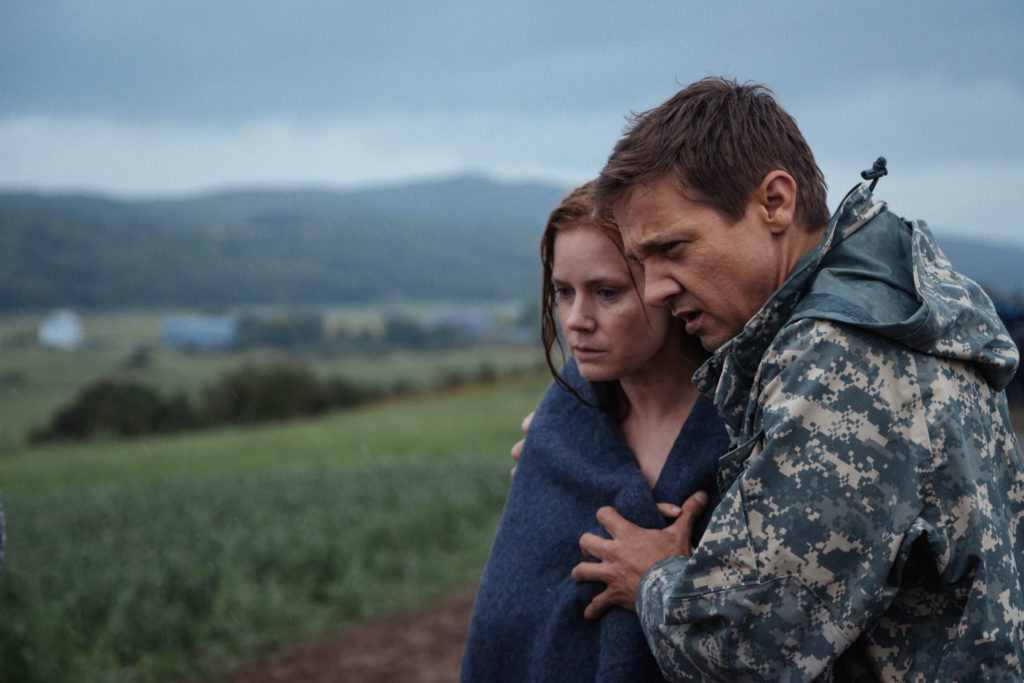
Louise and Ian are taken to Montana where one of the pods has landed (actually, suspended in air) and where an expansive military tent city installation has been put together complete with satellite hook-ups to every major nation in the world, all of whom are working together to try to communicate with the aliens at each of the 12 world locations. (North Korea is not one of the participating nations.)
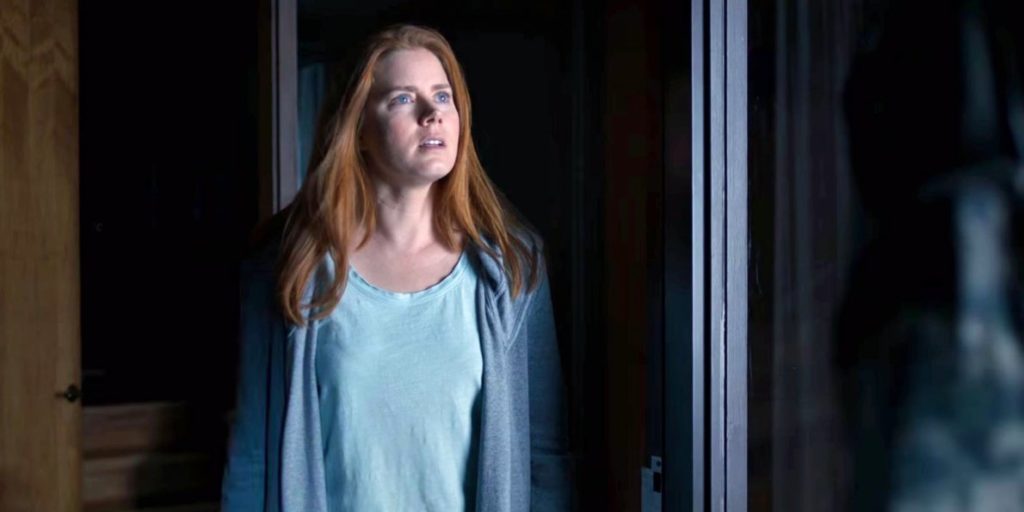
Thanks to their arrival at base camp, as Ian and Louise make the rounds of the technology and equipment at their disposal and are introduced to the various players, including their congressional contact Agent Halpern, director Denis Villeneuve takes the opportunity to make the same introductions to the audience, thus alleviating the need for unnecessary exposition within the film’s construct. But the real fun begins then they are taken to the pod itself, accessed through an inverted gravity tunnel.
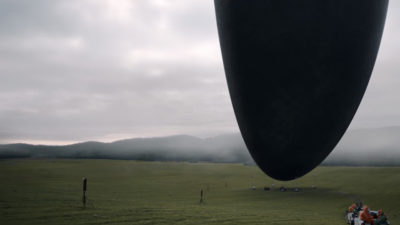
Burdened with bulky Hazmat suits and technological instruments, Ian and Louise approach a windowed barrier with caution. Filled with an ethereal fog behind the window, we slowly start to see the emergence of the aliens. Always shrouded by the fog, the experience of witnessing this alien life form is wondrous and somewhat mystical, not only for Ian and Louise, but the audience.
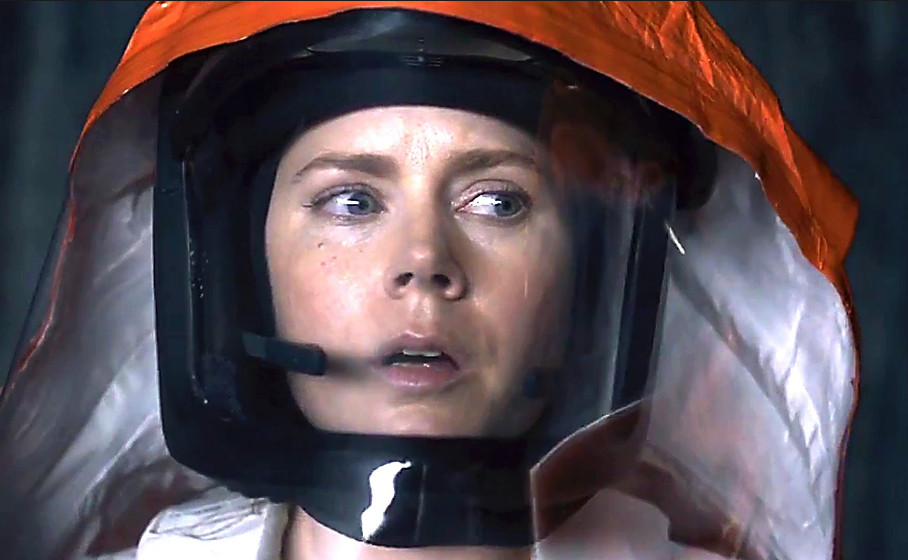
Able to discern shape and form, the aliens appear to be heptapods with seven radially symmetrical tentacles that float from what looks almost like a fist with knuckle joints. They can communicate and have been trying to do so with both sound that is similar to whale song and writing which is done against the window appearing as inky circular logograms. The ink comes from the tentacle ends which open out with a bottom-side starfish appearance. Mesmerizing.
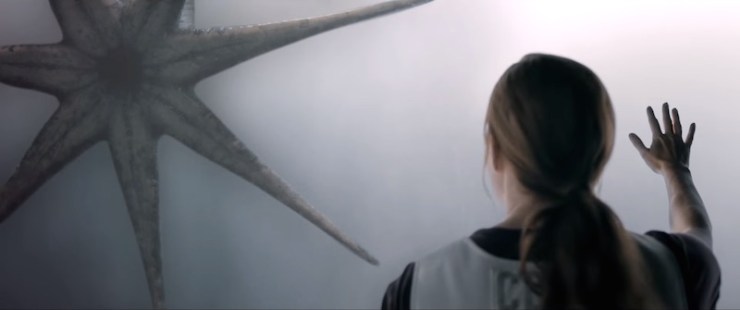
While Ian is trying to find some mathematical ratio or formula as a basis for the alien language, Louise takes another approach; a personal approach, teaching one word at a time much the way you teach a young child. Her first true connection is with the word “human”. Louise is now the conduit of learning and interspecies communication, but her methods are too slow for the government. Nevertheless, she and Ian continue with their work, with both bonding with the heptapods whom are named Abbott and Costello.
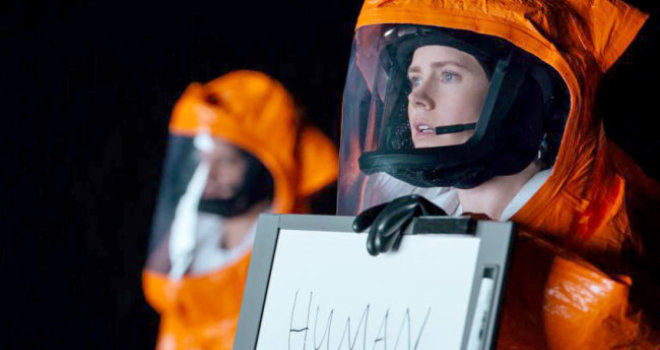
The depth with which Ian and Louise bond with Abbott and Costello is thrilling and thanks to the performances of Amy Adams and Jeremy Renner, exciting, enthralling and even a tad frightening to the audience watching. That fear is also brought to fruition on screen through global mindsets with a lack of patience, overwhelming fear of the unknown and the feral craving for survival and blood thirst.

By the third act, screenwriter Heisserer and director Villeneuve have set the stage for the type of showdown we have seen unfold, and is now unfolding, countless times over the course of human history. But the twists that Heisserer delivers as he diverges from the Chiang novella open the mind to possibility and the idea of greater benefit of the good, as well as define the consequences of actions and how miscommunication is often the source of so many problems, the consequences of which that can be far-reaching and wide and last for a long while. And while it may be a surprise move from the director who gave us “Sicario” and “Prisoners”, get ready for a five-hankie final act.
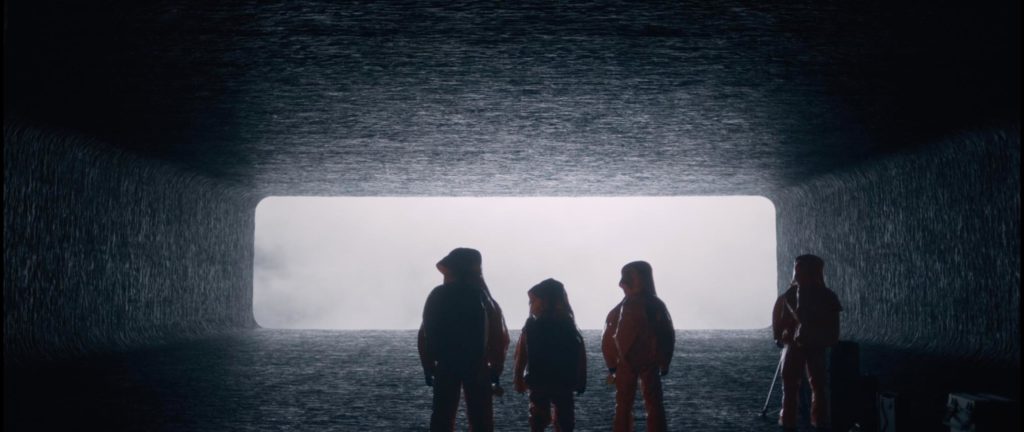
Amy Adams brings an unjaded purity to Louise that is welcoming and joyous in wonder with each stride, discovery and connection Louise makes with the heptapods. An Oscar caliber performance, Adams finds the balance for emotional truth while charms as obsession takes hold in unlocking the logogram language of the heptapods.

Although a bit under-used, as Ian, Jeremy Renner is a perfect match opposite Adams. Their long time real life friendship and prior professional pairings fit the story and the characters well given the strong thematic about communication.
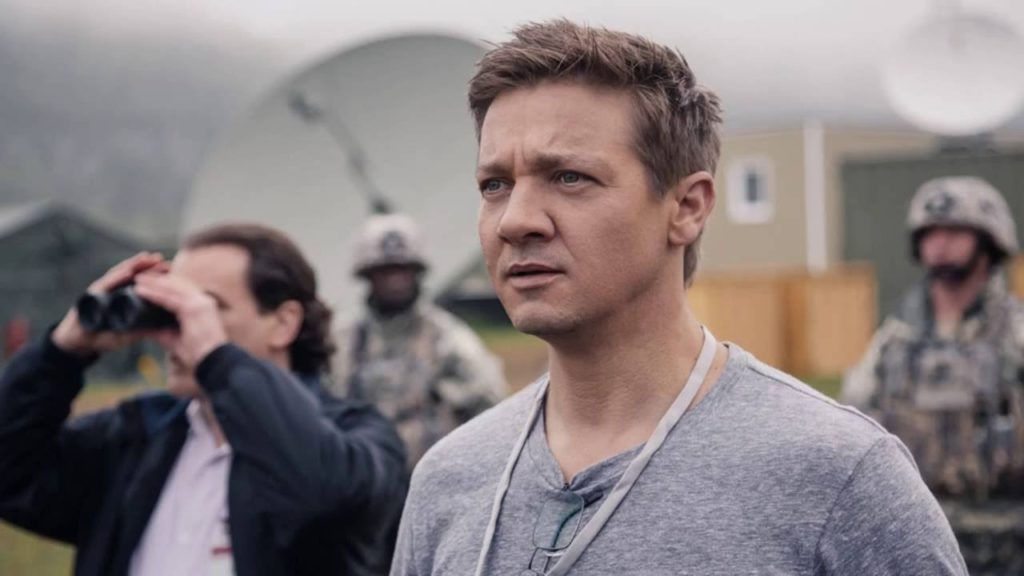
Supporting players are strong but this is essentially the Amy Adams and Jeremy Renner show. Exceedingly strong, however, is Michael Stuhlbarg as Agent Halpern, providing us with another chameleonic showing; this time an untrustworthy and shady presence that fills the bill for the political perspective of the alien meetings.
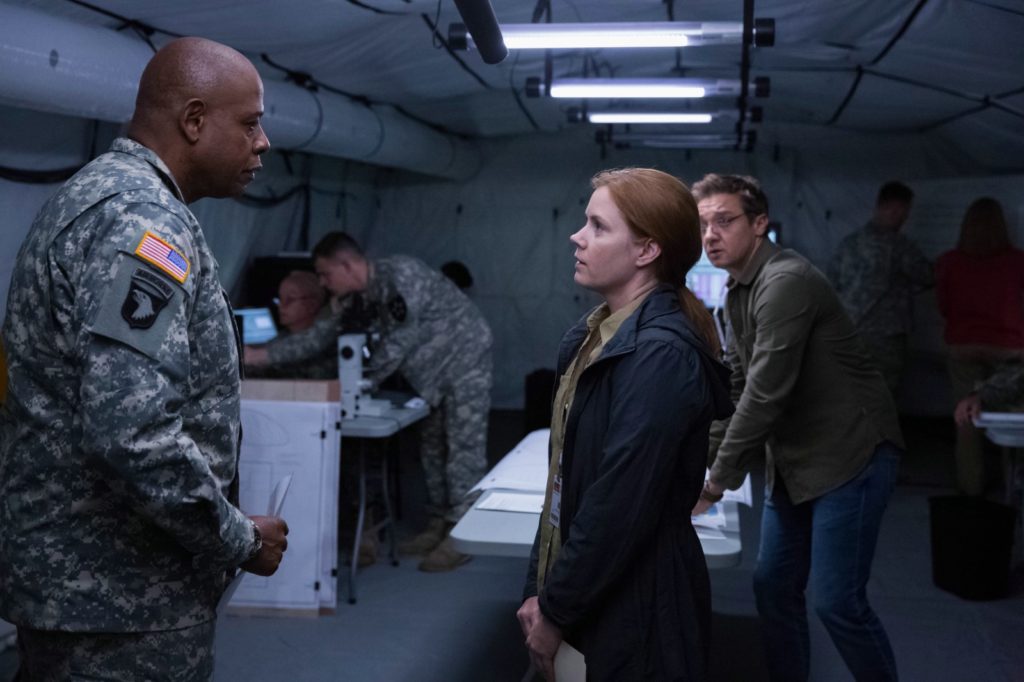
Eric Heisserer’s script is masterful in its construction and in distilling the myriad of thematics introduced in the Chiang novella. Although replete with scientific jargon, the script is never bogged down and retains a universality as it hones in on specific ideologies. This is a story that digs deep and asks questions others dare never to ask while opening one’s mind on viewing. That in and of itself is refreshing. Employing the exciting Sapir-Whorf Hypothesis (the structure of a language affects the species’ view of the world and cognition) as a basis for Louise’s theories on linguistics communication, Heisserer opened the story and as a result, the visual possibilities for Villeneuve. Existentially based sub-plots also provide tacit commentary on humanity (or lack thereof). Kudos also to Heisserer who actually developed the Heptapod language.
Villeneuve smartly employed the creation of physical sets as well as proving stand-ins for Abbott and Costello to aid Adams and Renner with resonant and truthful reaction and interaction. Perhaps moreso than in most films, with ARRIVAL previsualization (previz – visual design) and technical visualization (techviz – camera and movement) was key to the fluidity of heptapod comunication and the inky circular logograms. The result is breathtaking.
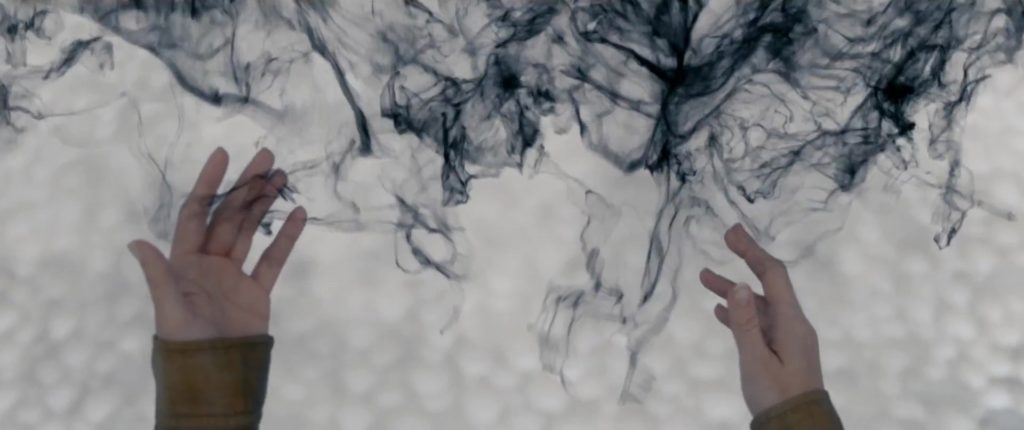
Further supporting the themes within the film, cinematographer Bradford Young plays with light and angles to immerse the audience in the experiences of Louise and Ian with the heptapods. Completing the picture is a modulating atonal whale-song-sounding soundtrack from Johann Johannsson that helps sustain the mystery and wonder of the film’s narrative structure as he interweaves the alien speech sounds within the score itself.
ARRIVAL is a film for our time and for all time.
Directed by Denis Villeneuve
Written by Eric Heisserer based on novella “Story of our Life” by Ted Chiang
Cast: Amy Adams, Jeremy Renner, Forest Whitaker, Michael Stuhlbarg












